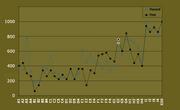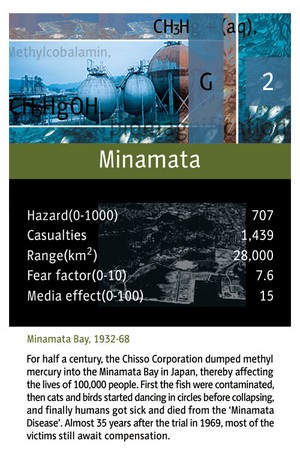|

For half a century, the Chisso Corporation dumped methyl mercury into the Minamata Bay, thereby affecting the lives of an estimated 100,000 people.
From 1932 to 1968, the Chisso Corporation dumped approximately 27 tons of mercury compounds into the bay. First the fishing diminished, then cats and birds started dancing in circles before collapsing, and finally humans got sick and died from the �Minamata Disease�.
The strategy of the Chisso Cooperation had been clear from the beginning: rather than implementing a sustainable environmental behaviour, they would provide small economic compensations to those affected by the pollution.
During the decades of continuous pollution, the communities along the bay became an unintentional ally of the corporation. When the contamination became known, the sale of fish from certain areas was forbidden.
In order to sustain themselves, the fishermen did whatever they could to shut the disease out of their lives. They would keep it a secret if a catch was contaminated, and people with the disease were isolated from the community.
Furthermore, people would avoid suing the corporation because they were afraid of losing the small economic compensation they did get from Chisso.
The Japanese government, too, played a leading role in the disaster. Instead of banning all fishing from the bay, the government prohibited selling the catch. The locals, off course, kept on eating the fish as they had always done. The dumping was implicitly accepted.
The corporation was not taken to court until 1969, where it was convicted for polluting the bay from 1932-1968. But the trial did not stop the dumping � the use of methyl mercury simply got outdated and was replaced by other methods.
40 years later many of the more than 3,000 victims are still fighting for compensation.
Comment this page
 
Links and references:
A course in the epidemology of the Minamata Disease:
http://www.pitt.edu/~super1/lecture/lec0361/
Case Study on Minamata from the Trade and Environment Database (TED):
http://www.american.edu/projects/mandala/TED/MINIM...
United Nations report on the recovery after the disaster:
http://www.unu.edu/unupress/unupbooks/uu21le/uu21l...
|

|
|



